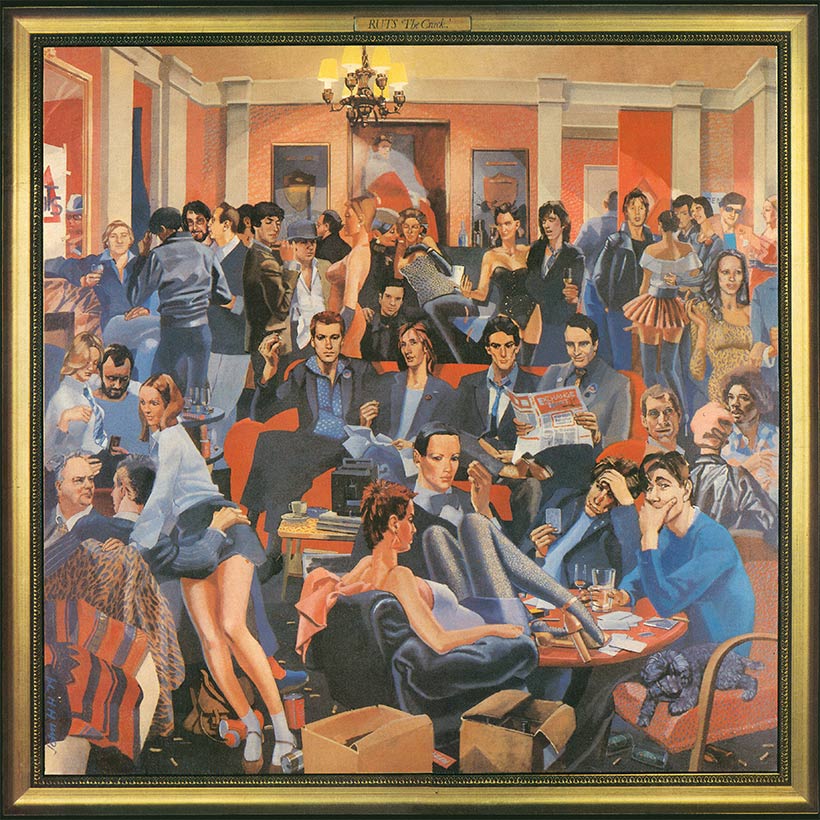
It was headline news in 1977 but, two years later, punk was on life support. Sex Pistols had long since expired; The Clash was intent on cracking America; British kids were being seduced by new, street-level movements such as 2-Tone and the mod revival. Yet in June 1979, West London quartet The Ruts gave punk some much-needed CPR when their classic second single, “Babylon’s Burning” – an urgent, driving (and still frighteningly prescient) anthem attacking racist-related violence – steamed into the UK Top 10, giving a taster of what would come from its parent album, The Crack.
To the wider public, The Ruts appeared to have materialized from the ether, but in reality, they were a band with a colorful past. Ironically, guitarist Paul Fox and charismatic vocalist Malcolm Owen first met in a hippie commune on the Welsh isle of Anglesey, during the early 70s. Drummer Dave Ruffy, meanwhile, learned his craft playing in an East End ska/rocksteady outfit, The Star-Keys, while still in his teens, and he loved reggae, as did The Ruts’ bassist, John “Segs” Jennings.
Eclectic tastes
“Punk was liberating, but a lot of the first wave [punk bands] just wanted to sound like The Stooges and there was so much more music out there,” Segs tells uDiscover Music. “Before we started, Ruffy worked in a record shop (James Asman’s in London’s Cannon Street) and we were all hungry for all the new stuff coming in. When Ramones came out, we thought the rawness of their sound was fantastic.”
“But we all had eclectic tastes,” Ruffy continues. “We liked Captain Beefheart and Malcolm was a funk fan – he bought Parliament albums in my shop. Punk was all about change, but it was about attitude as much as making artistic statements.”
Consequently, while The Ruts undeniably drew inspiration from Ramones, The Clash, and Sex Pistols, they were a powerful, versatile unit that could play with a vengeance. Their seemingly instant Top 10 success actually came on the back of 18 months’ hard gigging and a deal with Virgin Records brokered by their startling, dub-infused debut single, “In A Rut,” which appeared on the People Unite imprint, run by London reggae outfit Misty In Roots.
The band scored a second UK Top 30 hit in August ’79 with the blistering “Something That I Said,” but its excellent flipside, “Give Youth A Chance,” was The Ruts’ first highly successful dalliance with 70s roots reggae. With help from sympathetic producer Mick Glossop, The Crack followed in its wake and proved that The Ruts had far more to offer than merely high-octane anthems.
Spontaneous and heartfelt and real
“We recorded most of The Crack at [Virgin Records’ London studio] The Townhouse in about three weeks and had a great time. It was a state-of-the-art studio and with Mick we had a truly great producer,” Ruffy enthuses. “He was brilliant in the studio, really inventive and supportive of us, and we were impressed by his track record… Mick had previously worked with Frank Zappa and Van Morrison, and we loved them. The sounds he got on [Zappa’s] Joe’s Garage were just amazing. I remember we thought, ‘Imagine if we could get a sound like that!’”
The Crack was impressively diverse for a predominantly punk LP, with sublime set pieces such as the militant, reggae-fied “Jah War” and even the neo-prog nuclear-war commentary “It Was Cold” rubbing shoulders with a further brace of exhilarating, politically-charged anthems including “Backbiter,” “Savage Circle” and the brooding, anti-police brutality number “SUS.”
“I think The Crack has a kind of timelessness about it, because it was really spontaneous and heartfelt and real,” Ruffy says of the album’s longevity. “The songs came out of our experiences and they’re just really good, well-crafted songs, ultimately.”
“There’s heavy subject matter in there, but those subjects are still relevant,” Segs adds. “Look at something like ‘Jah War.’ Has discrimination ended and is everybody now living in harmony? No, they aren’t. Is Babylon still burning? Too right it is. Technology may have moved on, but the social issues remain the same, so those songs are every bit as valid today.”
The Crack was first issued in September 1979. It was housed in a memorable sleeve adapted from an original canvas painted by English artist John Howard and which now belongs to one of The Ruts’ biggest fans, Henry Rollins.
The album rose to No.16 in the UK Top 40 and ought to have been the first chapter in a success-strewn story. However, after the band notched up a third Top 40 hit with “Staring At The Rude Boys,” Malcolm Owen died of a heroin overdose in July 1980, tragically curtailing The Ruts’ career. Fox, Jennings, and Ruffy later split after recording two underrated LPs as Ruts DC, before an emotional reunion prior to Fox’s death, in 2007, led Ruffy and Jennings to reform Ruts DC with guitarist Leigh Heggarty. The newly aligned band thus issued 2013’s dub-enhanced Rhythm Collision Vol.2 and then returned with all guns blazing courtesy of the highly-acclaimed Music Must Destroy in 2015.
The band celebrated the album’s 40th anniversary by playing the record in its entirety on an extensive UK and Irish tour in 2019.
“Rehearsing for the tour was really emotional because we’ve ended up revisiting a whole heap of stuff from the past,” Segs reflects. “It’s almost like we’re hearing some of the songs for the first time because we haven’t played many of them live for so long. It’s only now we’re hearing the intricacies in the songs and realizing just how great Malcolm was and how inventive Foxy’s arrangements were.”
“Our standards are always very high, but they’re higher than ever these days, because we know we’ve got to step up with this tour,” Ruffy concludes. “We know we have to do justice to the songs as we realize The Crack is such an important album for a lot of people. There’s a responsibility there to get it right.”
This article was first published in 2019. We are re-publishing it today on the anniversary of The Crack‘s release in 1979. The 40th-anniversary vinyl reissue of The Crack can be bought here.
source https://www.udiscovermusic.com/stories/the-ruts-the-crack-debut-album/

